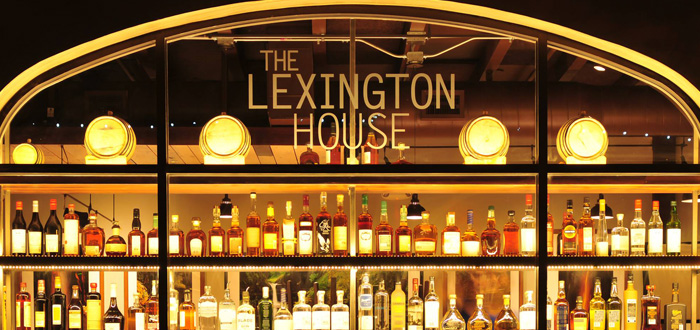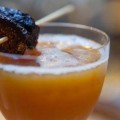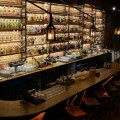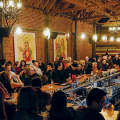Last fall, Bay Area bar gurus Stephen Shelton and Jimmy Marino teamed up with chef Philippe Breneman to open Lexington House, a chic bar and restaurant that focuses on local ingredients and offers friendly hangout. Recently, Shelton sat down with SanJose.com to talk about Lexington House’s cocktails, tending the bar and whether his first restaurant has lived up to his expectations.
SanJose.com: Drinks play a huge role at Lexington House. Could you tell us more about your background and how you develop the cocktail menu?
Shelton: [Co-owner Jimmy Marino and I] both kind of fell into bartending—that’s how we met. We come up with our own drinks, refine classics, or find other restaurants and places that are well respected with good spirits and cocktails and pay homage to their drinks. We’ll put on our menu that it’s a drink from such and such bar in New York. We’re not in it to steal [their ideas]. We’re also pretty close with the chef, so when we make our drinks they’re designed to go with the food.
What’s your favorite drink on the menu right now?
The barrel-aged professional, a bourbon-based drink.
What makes a good cocktail?
Keep in mind what spirit you’re using. I think people tend to make a drink and forget what spirit they’re using. Whether it’s a rye whiskey or a gin, what makes a good drink is when you have that base spirit and work around it—not masking or hiding it so that all the flavors of that spirit can come out. Enhancing it is what we strive for with our cocktails. You could say we are very spirit-driven in that regard.
What’s the most memorable experience you’ve had while bartending?
That’s a tough one. The thing about bartending is that every night is different. I’ve had some pretty cool nights…but at [Lexington House], I’d say serving David Finch cocktails.
What’s the story behind Herb Slinger?
Someone used to call me that, back in the day, up in Napa Valley. And I kept with it for Twitter and stuff. It used to be a line of syrups that I dabbled with for years. It’s the same syrups I make here, just with a different label on it. It’s more of a side project.
How can a gastropub be sustainable?
We source all our stuff from purveyors or the people who make the beer or the wine or whatever it is. It’s more geared toward [being] local and family-owned; more of a community driven thing than being sustainable as far as spirits go. I mean with the whole restaurant we try to be sustainable—we’re composting, buying sustainable wines, products and materials as much as possible. But [for us] it’s more about being local and maintaining a small footprint.
Has the Lexington House lived up to your aspirations?
The idea was to create this comfortable, convivial, and community-driven environment. It took a little time to catch on—what we were trying to do with the no reservations, and just hanging out and socializing while waiting for a table. That was the whole intention; to have a complete evening experience instead of a scheduled reservation where you come in, sit down and eat, then leave. Now people get it and love it. They come in early, have a drink, see their friends before they’re seated. There’s a strong sense of community.

 5 Killer Shows to See This Week in San Jose
5 Killer Shows to See This Week in San Jose  Review: Japanese Curry? Find It at Muracci’s Japanese Curry & Grill
Review: Japanese Curry? Find It at Muracci’s Japanese Curry & Grill 


